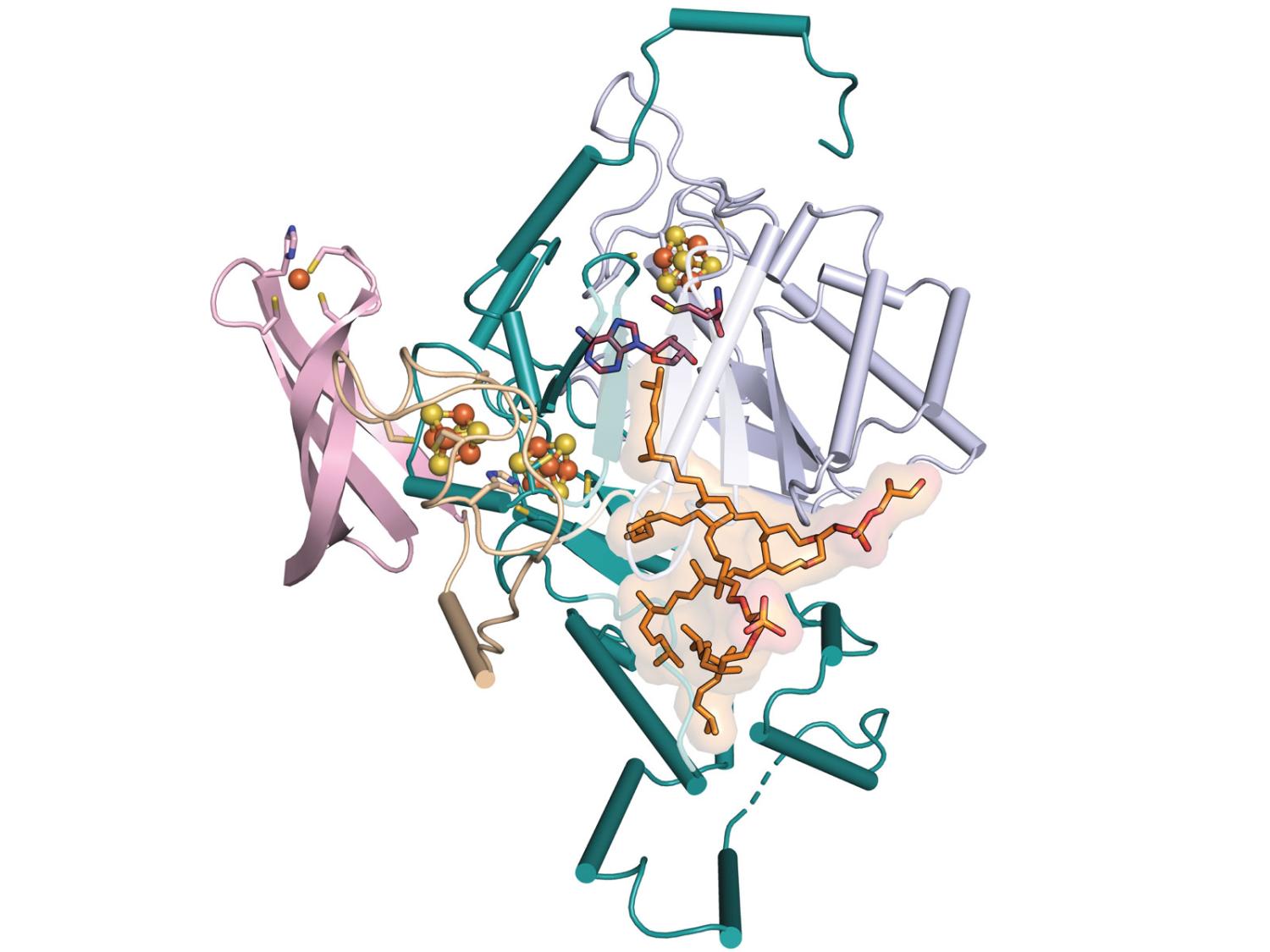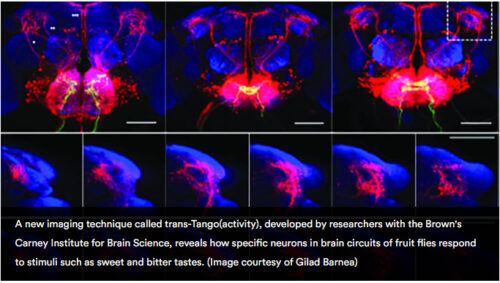極限環境に生息する単細胞生物に独特の安定性をもたらす脂質分子。 he lipid molecule provides unique stability to single-celled organisms that live in extreme environments
2022-08-22 ペンシルベニア州立大学(PennState)
 A team from Penn State and the University of Illinois Urbana-Champaign has determined the missing step in the formation of a molecule called GDGT, which is a promising candidate for use as an indicator of past climate. The team determined the X-ray crystal structure of an enzyme that facilitates this process called GDGT/MAS—shown here bound to additional cofactors. Credit: Booker Lab / Penn State. All Rights Reserved.
A team from Penn State and the University of Illinois Urbana-Champaign has determined the missing step in the formation of a molecule called GDGT, which is a promising candidate for use as an indicator of past climate. The team determined the X-ray crystal structure of an enzyme that facilitates this process called GDGT/MAS—shown here bound to additional cofactors. Credit: Booker Lab / Penn State. All Rights Reserved.
末端炭素を活性化し、この結合を可能にする酵素を特定しました。さらに、この酵素をコードする遺伝子も判明しましたので、過去の気候の指標としてのGDGT(グリセロールジビフィタニルグリセロールテトラエーテル)の利用が向上するものと思わる。
2つの炭化水素鎖の結合を促進する酵素は、ラジカルSAMタンパク質と呼ばれるタンパク質群に属し、抗生物質の生産、タンパク質、DNA、RNAの修飾、様々な生体分子の生成など、様々な化学反応に重要な役割を果たすことが知られている。
最初のステップは、ラジカルSAM酵素が関与する他の反応と同様である。ラジカルSAM酵素は、鉄硫黄クラスターの1つを用いてS-アデノシル-L-メチオニン(SAM)という分子を切断し、反応性が高く反応を促進する不対電子である「フリーラジカル」を生成する。そして、このラジカルが鎖の末端にある炭素から水素原子を引き離す。この工程を、2分子目のSAMを使って、2本目の鎖で繰り返す。
最終的には、それぞれの鎖の末端の炭素が、水素原子を取り除いた位置で互いに結合する。
第二の鎖から水素が取り除かれると、生じたラジカルは第一の鎖を酵素上の鉄硫黄クラスターから離し、代わりに第二の鎖と結合するように促す。この結果、2本の鎖が結合し、GDGTの形成に欠けていた段階が完了した。
<関連情報>
- https://www.psu.edu/news/eberly-college-science/story/revealed-missing-step-lipid-formation-could-enable-detection-past/
- https://www.nature.com/articles/s41586-022-05120-2
テトラエーテル型脂質合成酵素の発見、構造、機構解明 Discovery, structure, and mechanism of a tetraether lipid synthase
Cody T. Lloyd,David F. Iwig,Bo Wang,Matteo Cossu,William W. Metcalf,Amie K. Boal & Squire J. Booker
Nature Published26 July 2022
DOIhttps://doi.org/10.1038/s41586-022-05120-2
We are providing an unedited version of this manuscript to give early access to its findings. Before final publication, the manuscript will undergo further editing. Please note there may be errors present which affect the content, and all legal disclaimers apply.
Abstract
Archaea synthesize isoprenoid-based ether-linked membrane lipids, which enable them to withstand extreme environmental conditions, such as high temperatures, high salinity, and low or high pH values. 1-5 In some archaea, such as Methanocaldococcus jannaschii, these lipids are further modified by forming carbon-carbon bonds between the termini of two lipid tails within one glycerophospholipid to generate the macrocyclic archaeol or forming two carbon-carbon bonds between the termini of two lipid tails from two glycerophospholipids to generate the macrocycle glycerol dibiphytanyl glycerol tetraether (GDGT). 1,2 GDGT contains two 40-carbon lipid chains (biphytanyl chains) that span both leaflets of the membrane, providing enhanced stability to extreme conditions. How these specialized lipids are formed has puzzled scientists for decades. The reaction necessitates the coupling of two completely inert sp3-hybridized carbon centers, which, to our knowledge, has not been observed in nature. Herein, we show that the gene product of mj0619 from Methanocaldococcus jannaschii, which encodes a radical S-adenosylmethionine enzyme, is responsible for biphytanyl chain formation during synthesis of both the macrocyclic archaeol and GDGT membrane lipids. 6 Structures of the enzyme show the presence of four metallocofactors: three [Fe4S4] clusters and one mononuclear rubredoxin-like iron ion. In vitro mechanistic studies show that Csp3-Csp3 bond formation takes place on fully saturated archaeal lipid substrates and involves an intermediate bond between the substrate carbon and a sulfur of one of the [Fe4S4] clusters. Our results not only establish the biosynthetic route for tetraether formation but improve the use of GDGT in GDGT-based paleoclimatology indices. 7-10.


